NVIDIA RTX 5060 TI
vs. AMD RX 9070 XT
here are many benefits from financing a custom gaming PC. Such as clear transparent terms, fair rates and no prepayment penalties. You are just a few clicks away from being qualified to purchase your next gaming PC!
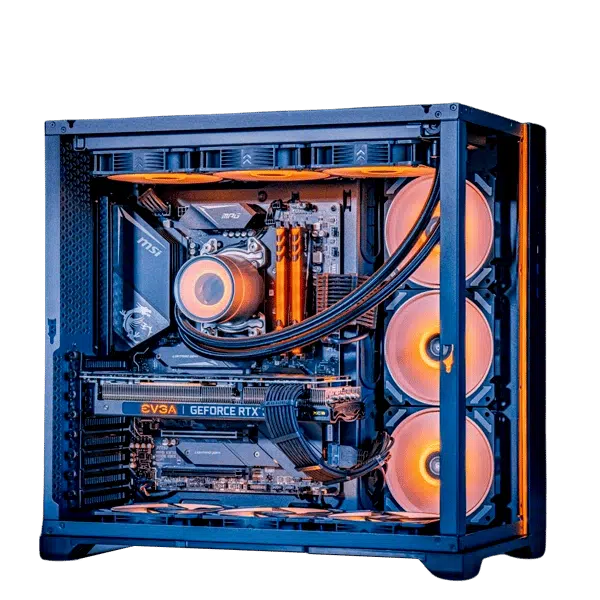
Which GPU Should You Choose?
The NVIDIA RTX 5060 Ti and AMD RX 9070 XT are two highly anticipated GPUs that promise solid performance for gamers and creators. While the RTX 5060 Ti is backed by NVIDIA’s cutting-edge Ada Lovelace architecture, the RX 9070 XT is an AMD powerhouse built on RDNA 4 technology. Let’s break down their specs, performance, and value to help you decide which card deserves a spot in your rig.
Looking to purchase a Gaming Computer? Check out our 5060 TI PREBUILT GAMING COMPUTERS & 9070 XT GAMING COMPUTERS
Specifications Overview
| Feature | NVIDIA RTX 5060 Ti | AMD RX 9070 XT |
|---|---|---|
| Architecture | Ada Lovelace |
RDNA 4 |
| VRAM | 8 GB GDDR6 |
12 GB GDDR6 |
| Boost Clock Speed | 1.8 GHz |
2.1 GHz |
| Memory Bandwidth | 288 GB/s |
384 GB/s |
| Ray Tracing Cores/Units | 3rd Gen |
2nd Gen |
| Power Consumption | 200W |
250W |
| Starting Price | $399 |
$499 |
Key Takeaways:
– The RX 9070 XT offers higher VRAM and memory bandwidth, which is ideal for handling visually intensive games and resolutions.
– NVIDIA’s 3rd Gen Ray Tracing cores provide slightly refined lighting and shadow detail compared to AMD’s 2nd Gen Ray Accelerators.
Architecture Comparison
| Feature | NVIDIA RTX 5060 Ti (Ada Lovelace) | AMD RX 9070 XT (RDNA 4) |
|---|---|---|
| AI-Capable Cores | 4th Gen Tensor Cores |
Accelerators |
| Ray Tracing Technology | 3rd Gen |
2nd Gen |
| Shader Cores | Optimized for efficiency |
Optimized for performance |
| Manufacturing Process | 5nm |
5nm |
Key Highlights:

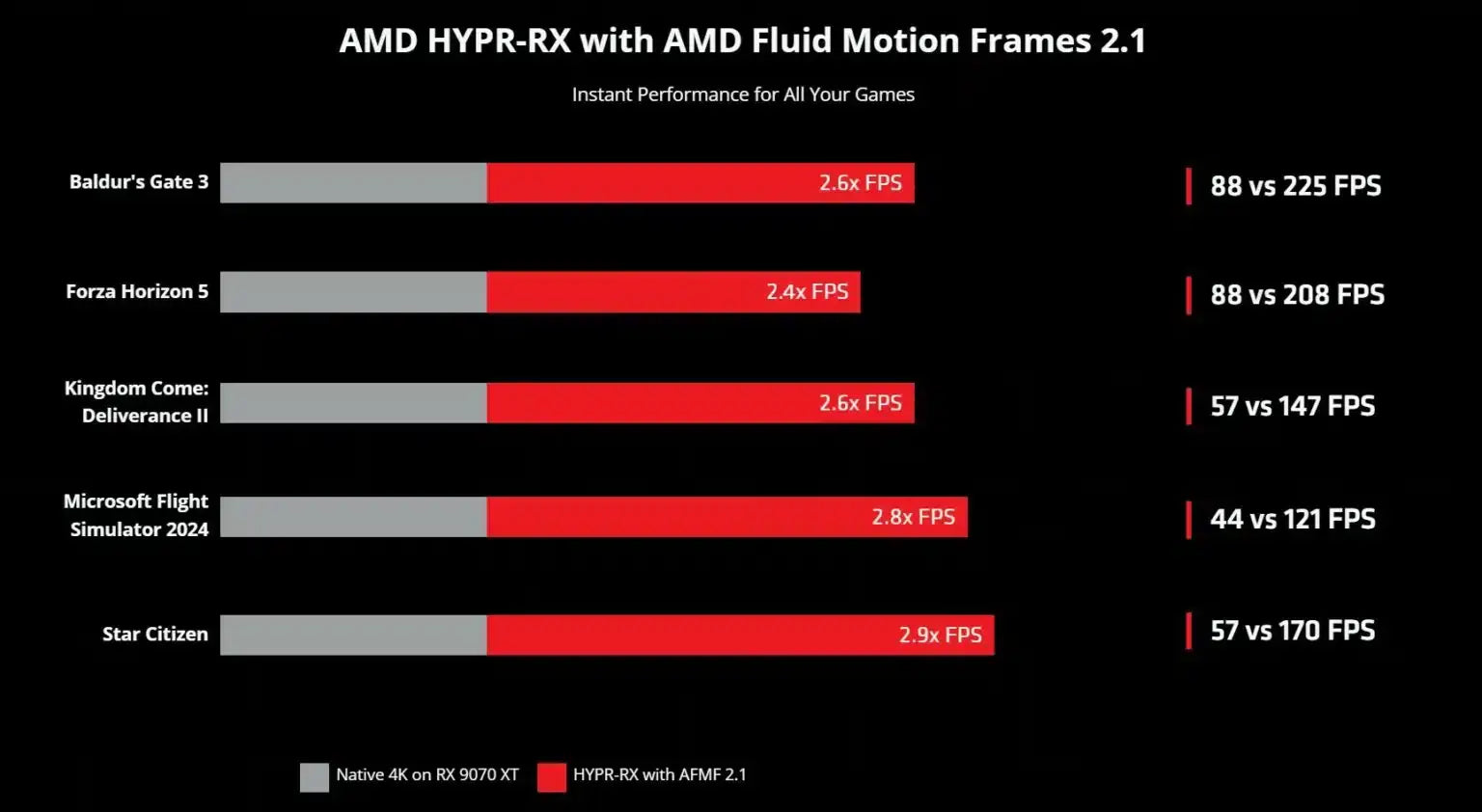
NVIDIA’s Ada Lovelace architecture delivers seamless AI-enhancements, including features like DLSS 3, enabling smoother gameplay at higher resolutions.
AMD’s RDNA 4 advantages include raw power and slightly better multitasking when pushed to high workloads.
Performance Comparison
| Performance Metric | RTX 5060 Ti | RX 9070 XT |
|---|---|---|
| AI-Capable Cores | 4th Gen Tensor Cores |
Accelerators |
| Ray Tracing Technology | 3rd Gen |
2nd Gen |
| Shader Cores | Optimized for efficiency |
Optimized for performance |
| Manufacturing Process | 5nm |
5nm |
Analysis:
The AMD RX 9070 XT leads in raw power with a higher clock speed and increased VRAM, making it suitable for high-refresh-rate 4K gaming. Meanwhile, the RTX 5060 Ti shines in efficiency and excels at leveraging AI-powered enhancements for smoother gameplay even on midrange systems.
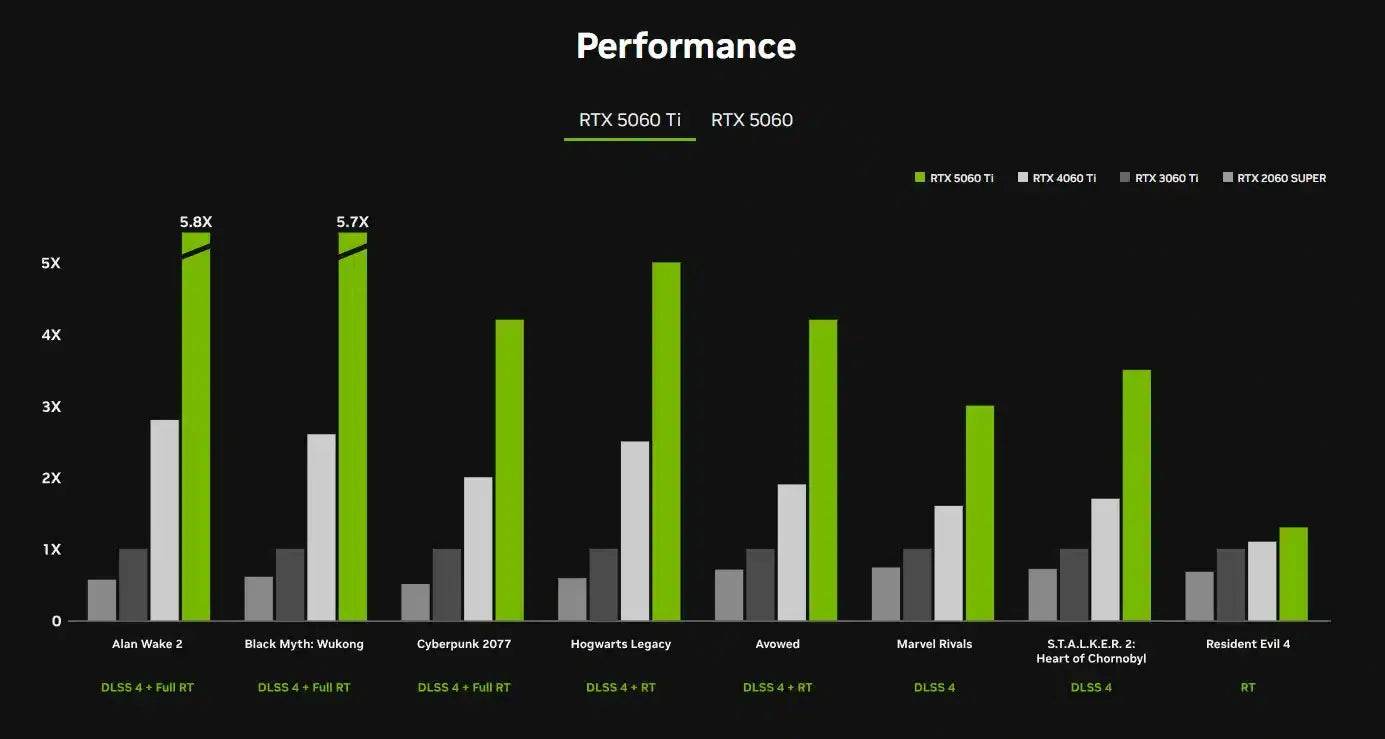
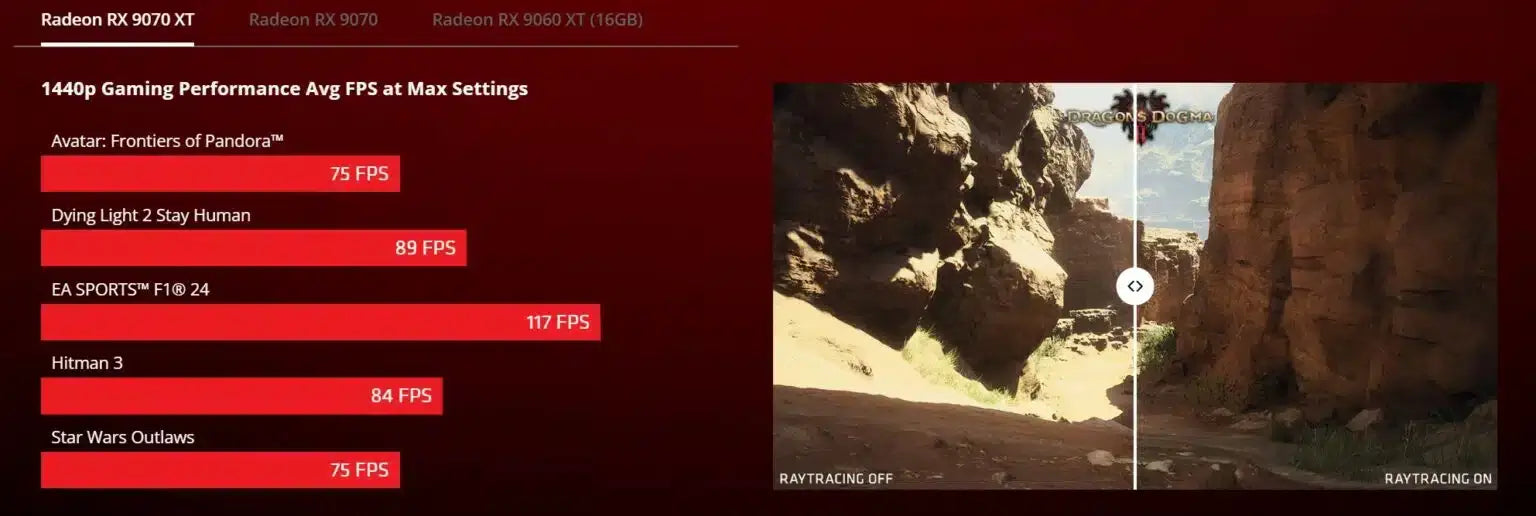
Memory and DLSS Advancements
| Feature | RTX 5060 Ti | RX 9070 XT |
|---|---|---|
| Memory Type | 8 GB GDDR6 |
12 GB GDDR6 |
| Memory Bandwidth | 288 GB/s |
384 GB/s |
| AI Frame Generation | DLSS 3 |
FSR 3 |
| Ray Tracing Enhancements | AI-powered light reconstruction |
Hardware-accelerated improvements |
Benefits of Choosing NVIDIA or AMD:
NVIDIA’s DLSS 3 generates AI-enhanced frames, pushing visuals and performance beyond native rendering capabilities. AMD pushes ahead with more VRAM and bandwidth, delivering impressive performance for demanding workloads in gaming and creative rendering tasks.
Energy Efficiency and Thermals
| Metric | RTX 5060 Ti | RX 9070 XT |
|---|---|---|
| Power Consumption (TDP) | 200W |
250W |
| Thermal Management | Advanced Cooling |
Standard Cooling |
| Max Operating Temperature | 85°C |
90°C |
Observations:
The RTX 5060 Ti stands out for its lower power consumption and optimized cooling, making it a cooler, quieter card—great for those prioritizing energy efficiency. The RX 9070 XT, while more power-hungry, packs in extra performance for users who need maximum output.
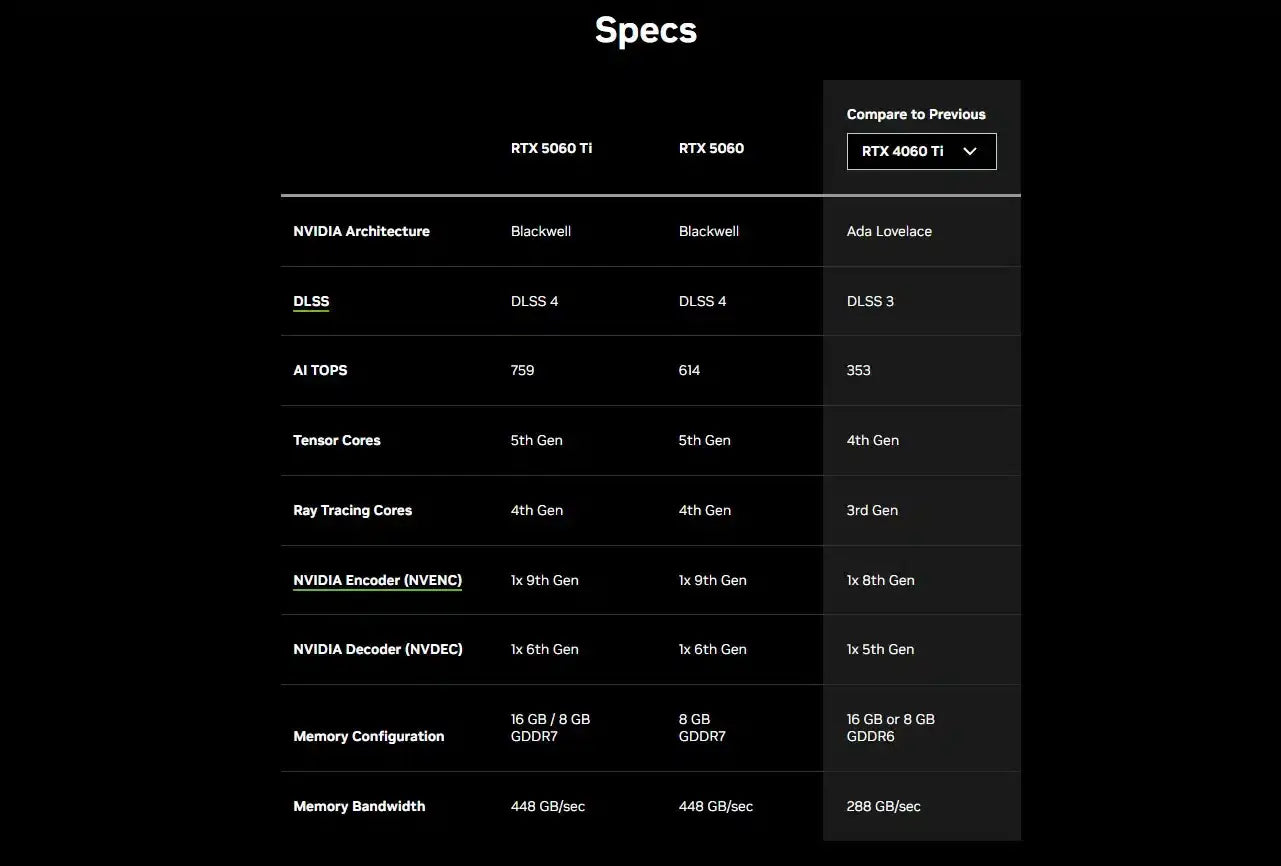
Price-to-Performance Ratio
| User Type | Recommendation |
|---|---|
| 1080p Gamers | RTX 5060 Ti for smooth performance and DLSS integration. |
| 4K Enthusiasts | RX 9070 XT for extra VRAM and bandwidth. |
| Creators | RX 9070 XT for high workloads and multitasking capabilities. |
| Budget Buyers | RTX 5060 Ti for better energy efficiency and value. |
For budget users, the RTX 5060 Ti offers better dollar value while still utilizing AI and DLSS 3 for premium graphical boosts. The RX 9070 XT stands out for gamers demanding more bandwidth and larger VRAM, but it comes at a higher price.
Summary – Which GPU Should User Type
| Recommendation | Value |
|---|---|
| 1080p Gamers | RTX 5060 Ti for smooth performance and DLSS integration. |
| 4K Enthusiasts | RX 9070 XT for extra VRAM and bandwidth. |
| Creators | RX 9070 XT for high workloads and multitasking capabilities. |
| Budget Buyers | RTX 5060 Ti for better energy efficiency and value. |
Final Verdict:
While both GPUs bring unique benefits to the table, the choice boils down to your priorities. If price and energy efficiency are key, the NVIDIA RTX 5060 Ti is the way to go, offering exceptional AI-driven upgrades for a sleek gaming experience. For gamers and creators who need maximum bandwidth and multitasking capabilities, the AMD RX 9070 XT reigns supreme with its raw performance. Whichever GPU you choose, both stand as strong contenders for bringing your gaming or creative projects to life.

